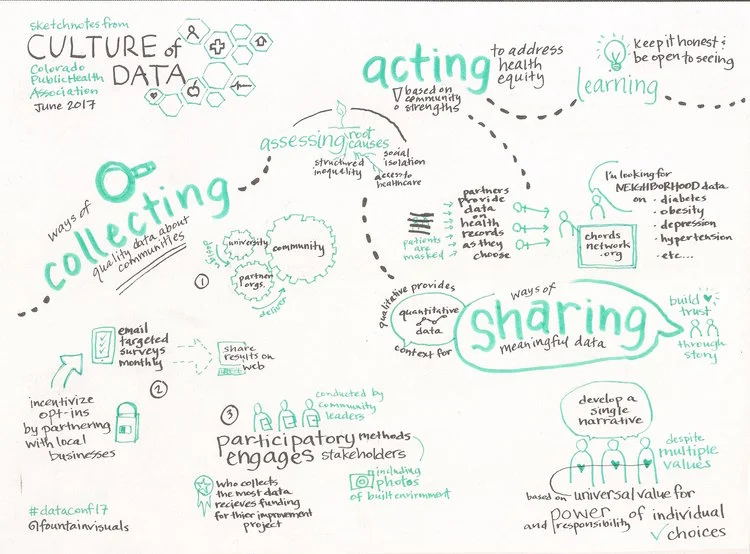Many of us are well trained in using writing to develop and convey our insights, but only some of us learn how visuals can help us organize and communicate our ideas. It’s well worth learning what you can, because visuals have many unique abilities. The best visuals balance the use of thoughtful images and words, and the best writing balances thorough explanation and visualization. Writers that use visuals to describe their ideas help their readers better understand the frameworks of thinking that inform what the writer is seeking to convey, and they make it easier for readers to share those ideas with others.
Read MoreResearchers often think to use visuals to present findings, overlooking the fact that to effectively communicate they must first fully understand the information themselves. While researchers may be surprised by the role visuals can play in their process, professional creatives like myself use visuals for observation, analysis, discovery and presentation. Researchers from all fields have a long history of using visuals as tools for analysis and discovery. No matter what purpose it serves, the type of visual that is best used all depends on what is being compared.
Read MoreNetworks are able to solve problems that individuals and organizations cannot on their own. Often when we think of them, we think about coordinated resources and activities, but we also need to think about the coordinated flow of information and ideas. After all, the reason networks are more effective at addressing large scale issues is that multiple clusters of expertise can inform one another in order to be both more efficient and more responsive to needs. To do so, they need to be in consistent communication with one another. But communication in networks is different than in organizations. When we understand this, we can recognize and capitalize upon the incredible opportunities they present.
Read MoreLast week the Colorado Public Health Association hosted the Culture of Data Conference, attracting hundreds of local professionals interested in learning more about using community data and engagement to achieve health equity. Here are sketchnotes of some of the sessions I attended.
Read MoreMy last blog was all about the ways that we might be hiding instead of communicating and how doing so can hurt us. Now for the good news: hiders like myself can also put their instincts to good use. Here are some ways that I've found my introverted, introspective attributes to be highly helpful in communications.
Read MoreWhile you may know me as an expert communicator, what you may not know about me is that I am also an expert hider. It has taken me years to develop messages about my services, to have a website that I am proud of, to be able to write and stories like this - and a lot of that time and energy was spent waiting, overanalyzing, rehearsing, pretending. Knowing one needs to communicate well and committing oneself to the hard work of doing it consistently are two different things. Like me, the organizations I work with often recognize that communication - among internal teams and with the communities they are a part of - is one of the greatest obstacles they face as they seek to grow their impact.
Read MoreEarlier this month professionals and leaders from across science, business, energy, finance, and more met to have conversations about creating an "Economy in Service to Life" at the first annual Regenerative Future Summit. I was fortunate enough to be able to attend a couple sessions near and dear to my heart: "The Power of a Narrative in Building a Movement" and "Conscious Leadership in Business."
Read MoreDear Hoop Dreams, Our nonprofit wants to share information about our programs with Latino individuals. In addition to translating text into Spanish, how else do you suggest we tailor our materials for this audience? Lost In Translation
Dear Lost in Translation, Thank you for asking this question, which I believe will open doors to increased understanding for hopefully many readers. I have one simple recommendation: Get help from those with experience.
Read MoreRecent events have led me to give considerable thought to dominant hierarchies, their inevitable collapse, and how we can best transition to a different, more balanced social network. I believe that much of this transformation is fundamentally about how we think of power. In 1959, social psychologists French and Raven described five bases of power...
Read More








